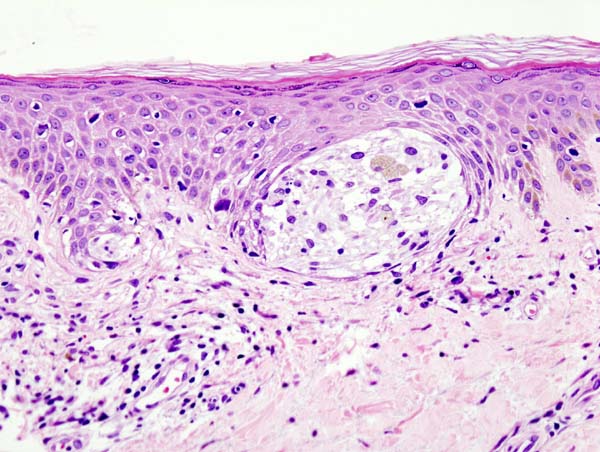Pediatric melanoma is a rare disease with only around 400 cases diagnosed in the United States every year. To better understand this disease and how best to treat it, St. Jude Children’s Research Hospital scientists created a registry called Molecular Analysis of Childhood MELanocytic Tumors (MACMEL). A paper on findings from the registry was published today in Cancer.
“What is different about the MACMEL registry is that it is prospective,” said corresponding author Alberto Pappo, M.D., St. Jude Solid Tumor Division director. “We’re seeing the vast majority of enrolled patients as part of the melanoma clinic at St. Jude. We can follow these patients and conduct detailed pathology and molecular analysis.”
More than one disease
Through such efforts as the St. Jude-Washington University Pediatric Cancer Genome Project, scientists learned that pediatric melanoma is really not one disease, but multiple diseases. These subgroups include:
Conventional melanoma: melanocytic lesions with features similar to adult melanoma that occur almost exclusively in adolescents. These tumors often have BRAF and TERT promoter mutations.Spitz melanoma and atypical Spitz tumors: occur in younger patients and are characterized by copy number alterations. These tumors typically have kinase fusions involving MAP3K8, NTRK, ALK, ROS1, RET, BRAF or MET.Giant congenital nevus melanomas: aggressive tumors that have NRAS mutations and upregulation of TERT.
No reliable clinical or morphologic features can accurately predict the clinical behavior of melanoma tumors in children. However, the registry provides the opportunity to better understand the natural history of these tumors and, potentially, treat them.
Registry findings
“What we’re seeing from the registry’s data is that these are incredibly diverse tumors. Some patients need drastic measures. For many others, masterful watching is the best option,” said last author Armita Bahrami, M.D., formerly of St. Jude and now of Emory University. “It is critical for the care team to consider all available clinical, pathologic and genomic data in order to assign patients to the appropriate risk category.”
The registry has been open and enrolling patients since 2016. The researchers analyzed data from the first 70 patients enrolled and categorized them as either one of the three recognized subgroups, or as “other.” From the registry, the researchers were able to determine that most spitzoid melanomas have a gene fusion, most commonly involving MAP3K8. They also found that spitzoid melanomas that do not have a TERT mutation have a benign clinical course.
For conventional melanoma, the researchers found that the most common mutation was in the gene BRAF. Conventional melanoma patients with advanced disease did not do as well as those diagnosed with early stage disease. The study also showed that giant congential nevus melanomas all had NRAS mutations and all patients died of their disease.
A focus on rare disease
These results highlight the need to take into consideration the patient’s age, pathology review and integrated genomic analysis not only to arrive at the right diagnosis but to anticipate the clinical behavior of these tumors.
“Now that we have all of this information available, we can be significantly more selective and integrate this information into treatment decision making,” Pappo said. “It will help us provide the best information possible for the patient as far as prognosis, recurrence and the need for additional surgery or therapy.”
A majority of the patients included in the registry were treated at St. Jude through a dedicated clinic for pediatric melanoma. The clinic is ongoing and has been held virtually during the COVID-19 pandemic.
Sun damage causes genetic changes that predispose children and adolescents to melanoma
More information:
Alberto S. Pappo et al, A prospective, comprehensive registry that integrates the molecular analysis of pediatric and adolescent melanocytic lesions, Cancer (2021). DOI: 10.1002/cncr.33750
Provided by
St. Jude Children’s Research Hospital
Citation:
Melanoma registry results shine light on rare pediatric cancer (2021, July 6)
retrieved 6 July 2021
from https://medicalxpress.com/news/2021-07-melanoma-registry-results-rare-pediatric.html
This document is subject to copyright. Apart from any fair dealing for the purpose of private study or research, no
part may be reproduced without the written permission. The content is provided for information purposes only.



